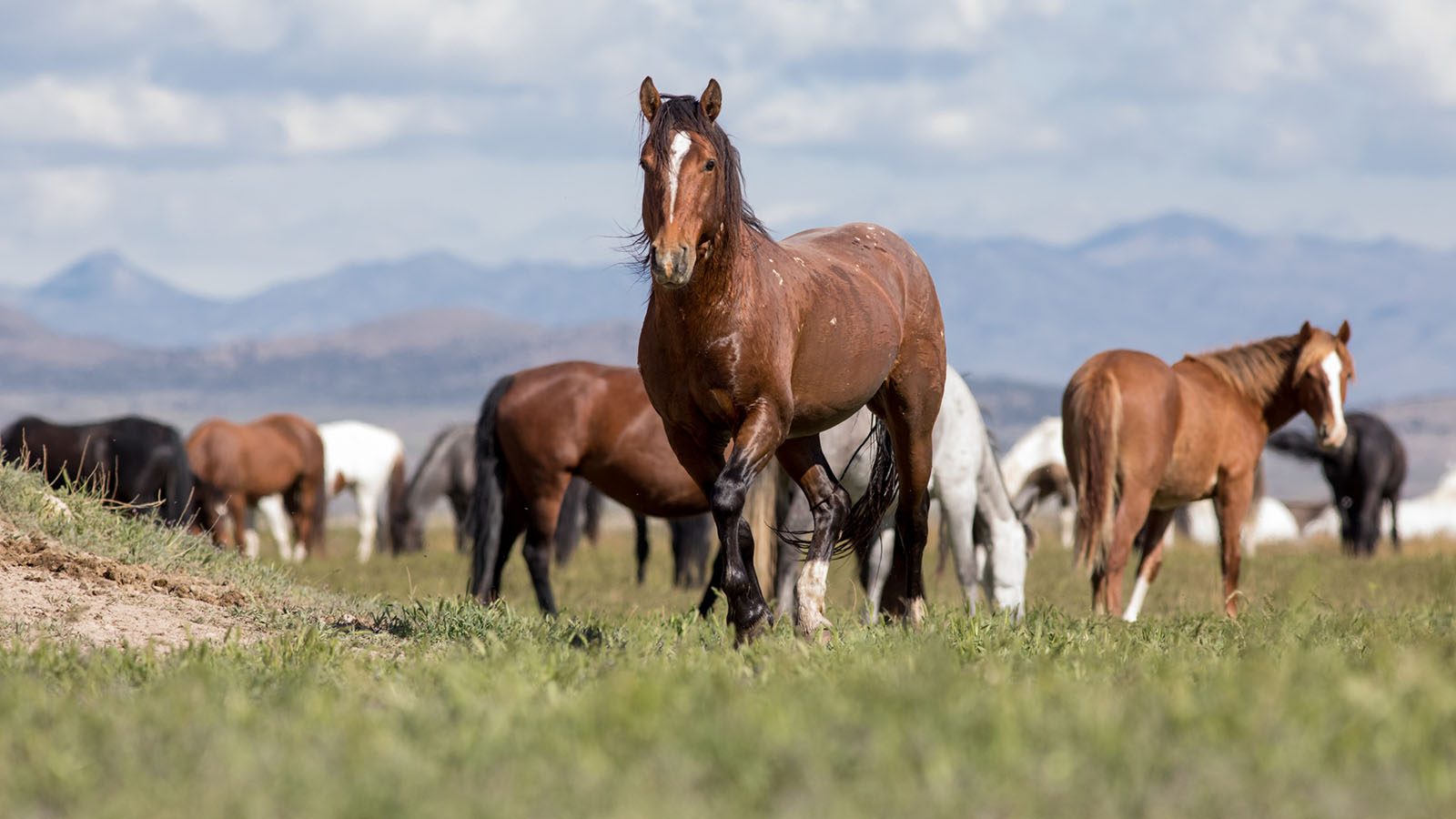The International Society for the Protection of Mustangs and Burros (ISPMB) is fighting to conserve America’s wild horse population. The ISPMB is currently the only advocate protecting all free-living horses, burros, and feral donkeys in North America, and their mission statement makes it clear that their goal is to protect them from ‘capture, slaughter, or extinction.'”
Horses are called “wild” when their ancestors have adapted to life in the wild. As of April 1, 2021, there were 31,300 free-roaming horses and 6,825 burros under federal protection in 10 Western states. When mustangs are being removed from public lands–often at the request of ranchers who use them for cheap or free labor–they are sent to long-term holding facilities. As a result, many end up in the slaughter pipeline, sold to Mexico and Canada for meat.
To prevent these horses from reaching the point of no return, the ISPMB is working on several fronts:
- Protecting mustangs on public lands by opposing “unequivocally cruel” roundups.
- Increasing wild horse populations by protecting access to habitat and water and improving herd management practices.
- Exposing the “wildlife welfare ranching” industry for what it is: a slaughter pipeline for horses.
The organization believes that all free-roaming horses should be protected under the Wild Horse and Burro Act of 1971, which is still in force today. To that end, they are fighting for federal protection of wild horses on state-owned lands.
The ISPMB believes that “ranchers should be compensated for any damage to land by free-roaming horses,” according to its website. “However, individuals who conduct livestock business on public land should not be given subsidies to compensate for the damage to other private parties’ property caused by wild horses.”
The Dangers Faced by Wild Mustangs and Burros
The Wild Horse and Burro Act “allows for the removal of healthy wild horses or burros” if their numbers exceed available habitat. Still, according to the ISPMB, roundups are often conducted in winter when horses can least cope with them.
Roundups also harm mustangs indirectly by taking them away from water sources at the worst time of the year. Sometimes horses will wander into such low-quality “water developments” as antifreeze drums, discarded septic tanks, and other toxic sources.
In 2014, a BLM worker was caught on camera using a second horse to push a wild mare around in circles until she collapsed from exhaustion. The man was fired after the SPCA published the footage, but according to the ISPMB, “there are documented cases of BLM wranglers in Nevada using horses to push wild burros over cliffs.”
Even when mustangs are not pushed beyond their physical limits, roundups can still be deadly. According to the ISPMB, between 2008 and 2013, “over 2,800 federally protected wild horses died in holding facilities due to the severe stress of capture and confinement.”
Since there are no statutory provisions for humane euthanasia–which would require that an animal be terminally ill before being killed–even healthy mustangs are sometimes put down.
The ISPMB is fighting these roundups and euthanasia practices by demanding that the BLM “adopt a humane birth control plan for wild horses and burros,” according to their website. In addition, this organization is demanding the protection of the herds on state-owned lands.



Leave a Reply